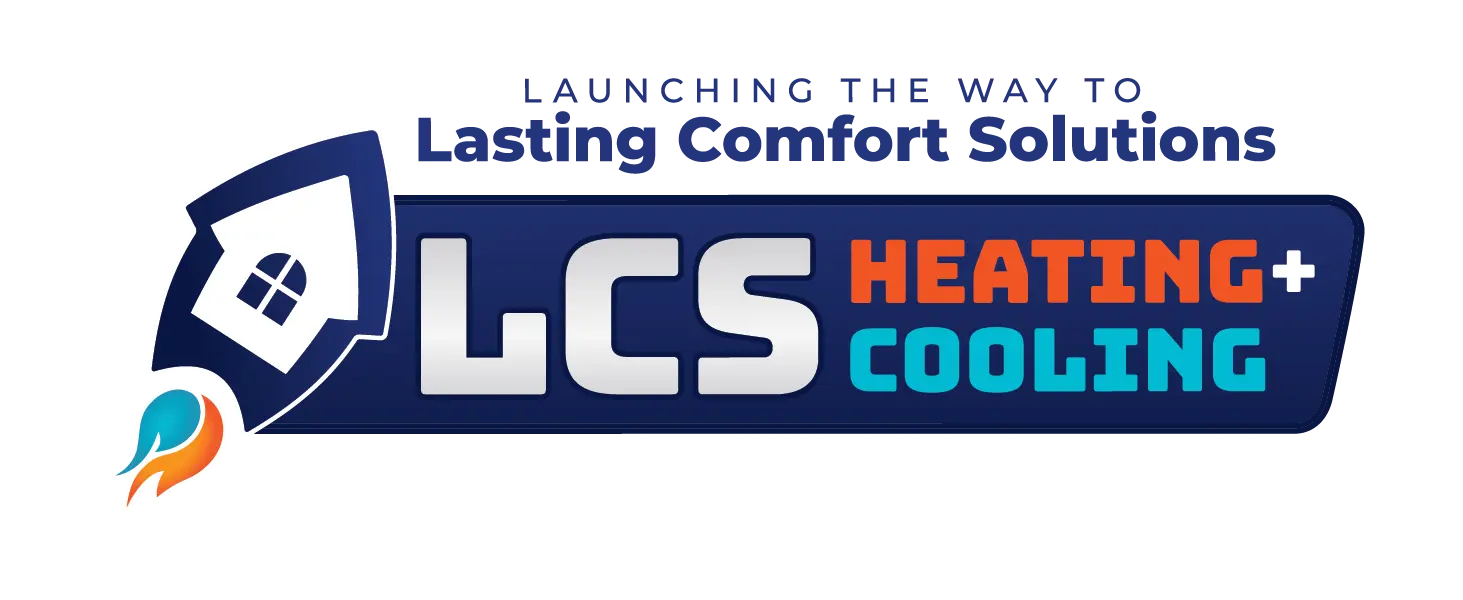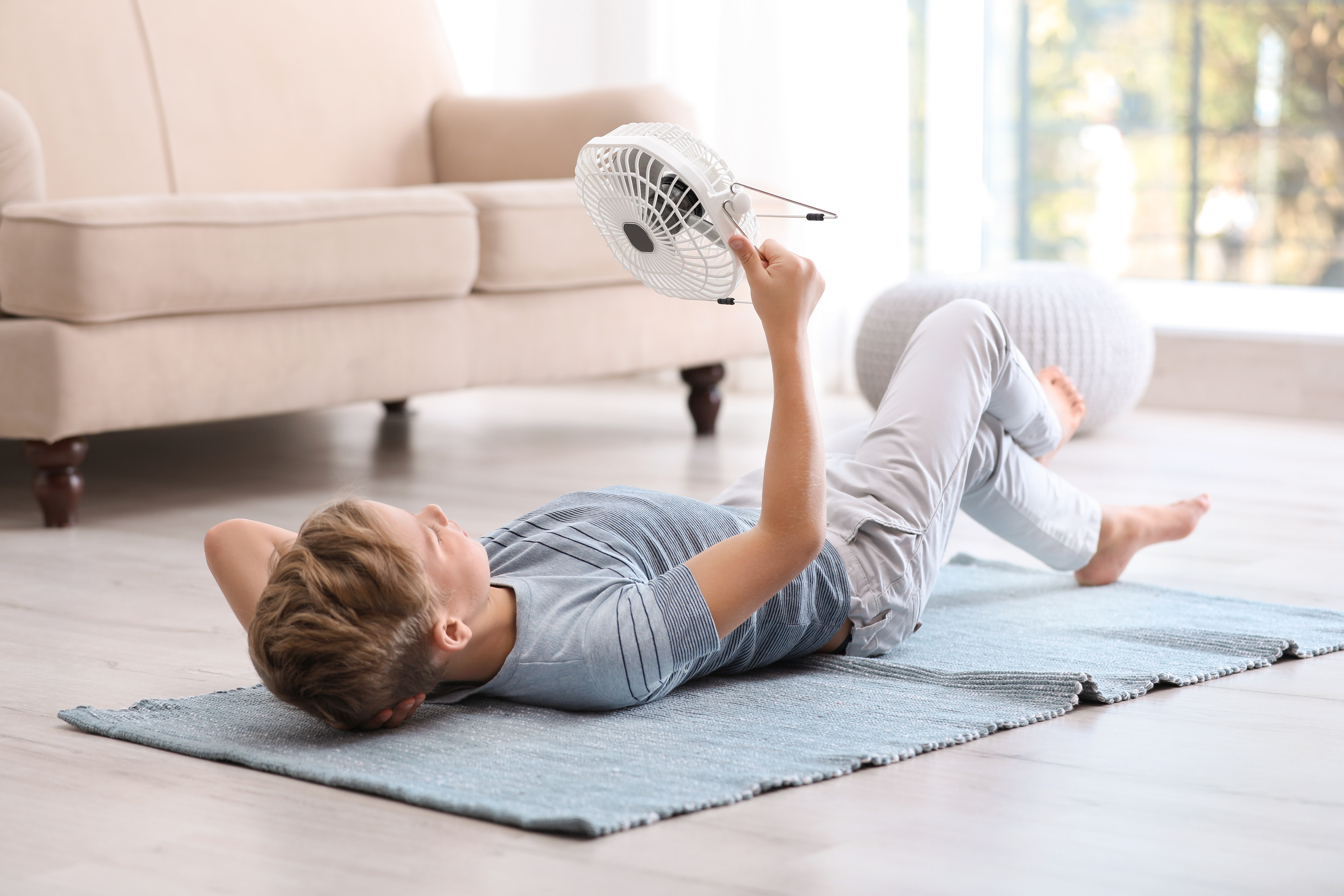With warmer days ahead, you want to make sure your AC is ready to go. Sometimes the long break during winter will stop your unit from running properly when you need it to start up. A little maintenance can go a long way.
Prepping Your AC Unit After Winter
It’s always a good idea to clear any debris around your AC unit before turning it on. Sticks and leaves from the fall and winter can collect around your system and interfere with its air flow and overall function. After you check that area out, take a peek at your air filter. It might be time to swap your old filter out for a clean, new one. This will make it easier for your AC to run.
You’ll also want to make sure your unit has power. If the unit doesn’t kick in after you’ve adjusted your thermostat, go ahead and take a look at your circuit breaker before calling your HVAC company. The switches should be flipped to “on,” so this could be a simple fix if you’re having trouble with your AC. Otherwise, you might be looking at some different issues.
Common Problems Starting Your AC
Some problems that pop up after winter are relatively easy to fix, but others require professional expertise. These are some of the most common hiccups we see with units starting up in spring.
1. Thermostat Problems
Hearing a loud racket when you turn on your AC unit is usually a sign that something isn’t right with your blower motor or fan motor. Of course, if you aren’t hearing anything at all, then you might be having a problem with your thermostat.
The electrical wiring from your thermostat is connected to your AC. Assuming your thermostat has good batteries, you might be facing an issue with some electrical work. An HVAC professional can take a look and let you know what needs fixing.
2. Low Refrigerant
When your unit doesn’t have enough refrigerant, it won’t be able to cool your home. Your HVAC company will have the equipment needed to measure the levels and see if they’re low. Unfortunately, just topping off the refrigerant might not be enough. Your system could have a leak. If your HVAC technician says low refrigerant is to blame, make sure they’ve also done a leak search. You don’t want the issue to repeat itself!
3. Dirty Units
After the “off” season, you might also have trouble with a dirty system. The AC unit itself, also known as the condenser, may have dust and debris inside it. This can mess with the fans and block airflow, just like a dirty air filter indoors. A good cleaning can help.
In other cases, you could be facing a dirty evaporator coil. Older units and equipment that hasn’t been serviced in a while will sometimes run into this problem. Because the coil needs to be completely removed for cleaning, this isn’t something you can handle on your own. You’ll need an HVAC technician to help you out. Still, it’s a pretty quick process.
Plan Ahead with a Spring AC Tune-Up
Letting your unit run when it isn’t working properly can lead to a series of bigger problems. If your unit isn't working for your home, call on your HVAC company. Units that are dirty or need a leak repaired should be addressed sooner rather than later. Typically, these problems can be fixed during your annual maintenance!
Scheduling regular maintenance can keep your unit working its best. A technician can check all of your connections, clean up your unit, lubricate its moving parts, and more. Our LCS Annual Maintenance Plans are designed to help you out.
Getting routine checks with your unit before it acts up can help extend its life. Plus, it’s more convenient than waiting for service when something goes wrong. The temperatures will only continue to rise, and you don’t want to be caught without cool air. Let us know how we can help. Give our team a call at (317) 238-3961.
May 10, 2019
When you’re making an investment with new HVAC equipment, you obviously want it to last as long as possible. That’s where a good warranty—or two—can help. Homeowners often have the option to get HVAC warranties for both parts and labor. Knowing a little more about each policy can help you determine the path that’s right for you.
The Two Sides of an HVAC Warranty
You have two different types of warranties to review with new HVAC equipment. The labor warranty covers service call charges and labor with your HVAC company. (More on that in the next section.) But there’s also the manufacturer’s part warranty. This is what covers the cost of broken parts in a given period of time.
A 5-year part warranty is the standard for most manufacturers. This covers equipment problems that might come up in the early years of your system. That way, you won’t have to pay for replacement parts. Some brands give you the option to extend the manufacturer’s part warranty to 10 years, but you typically have to register your new equipment first. Unfortunately, many homeowners forget to follow-through. Then they miss out on the longer part warranty.
Some HVAC companies, however, streamline the process by registering the equipment on behalf of their customers. Then those extra 5 years don’t get bypassed. That’s actually how we do things here at LCS Heating and Cooling. Our customers really appreciate that we handle these details for them. Plus, having that 10-year part warranty in place makes it easier on our crews if we ever need to make repairs.
What Your Labor Warranty Should Cover
Now that you have a better understanding of a manufacturer’s part warranty, it’s time to review the HVAC labor warranty. These warranties will vary from company to company. In general, though, your labor warranty will cover the service call charges and labor costs for any repairs during a certain number of years. Since a manufacturer’s warranty only covers the parts, the labor warranty basically works to fill in the gaps.
Without a labor warranty in place, you would have to pay for the service and labor fees for your repairs. But you’d essentially be home free with any repairs if both your manufacturer’s part warranty and 10-year labor warranty are still good. Any problems with your equipment would then be fixed for free. And if you work with the right HAC company, there shouldn’t be any deductibles either, which can really help take the stress out of repairs.
Finding the Right Warranty Details
Knowledge is power, right? But it’s hard to understand your options when things aren’t explained clearly. Working with an HVAC company that can talk to you in simple terms will help ease your decision-making process. That’s why you’ll also need to know what your warranties won’t cover.
Issues related to dirty filters and other specialized maintenance won’t be covered by your warranties. For example, this could relate to things getting caught in the flue, such as snow or rodents. Air flow issues and leak searches that aren’t repaired will also probably be separate. But to be honest, these issues are rare. The part and labor warranties are meant to cover the costs when a part in your system fails and needs replaced. These supplemental maintenance issues are another matter.
Getting your equipment inspected on a regular basis should keep your warranties in check (and alert you to other problems that might be going on with your setup). Still, you’ll have to be careful to read your contractor’s warranty plans before you sign. Not every HVAC company will offer a 10-year labor warranty. And not every company will register your equipment for the extended manufacturer’s part warranty.
It’s always best to review your options. But if you can have a clear conversation, you should be able to get all of your questions answered upfront. Then, you’ll be better prepared if anything happens to go wrong down the road. And you might have some HVAC warranties to help you out!
March 15, 2019
During the hot summer months, most homeowners don’t expect to find ice on their air conditioning unit. Unfortunately, this issue is more common than you might think, and having ice on your AC is a sure sign that something’s not right. Reviewing the likely causes can help you get your equipment back to its normal working state.
Problems with AC Ice
Once you notice that there’s ice on your unit, you need to turn your AC off. This can help prevent the situation from getting worse. Assuming it’s warm outside, this will help get the ice to melt, too. Let your unit thaw completely, then work through these different scenarios to identify the underlying cause.
1. Poor Airflow
If you’re lucky, the ice on your AC is the result of a more minor issue. After the ice has thawed, the first thing to do is to check is your air filter. Sometimes ice can form on air conditioners when there is poor airflow, so replacing your old air filter with a new one might be all it takes to get your unit running smoothly again.
One of the problems with dirty filters is that they put more stress on your evaporator coil. Reducing airflow over your evaporator coil can then cause your equipment’s temperature to drop below freezing. Consequently, humidity will start to collect around your AC and turn into ice.
Hopefully a new air filter will be enough to remedy the situation. To test this, wait for the ice to melt and then turn your air conditioner on again to see if the ice returns. If it doesn’t—then you’re all set. But if the ice comes back, there might be another problem.
2. Dirty Evaporator Coil
When ice forms even with a new air filter, you might be dealing with a dirty evaporator coil. This can happen with older units or AC equipment that hasn’t had regular maintenance.
In this case, you’ll want to turn the equipment off again and call on an expert to come clean the evaporator coil. Unfortunately, this isn’t something that homeowners can do on their own. The process requires a tech to fully removing the indoor coil to clean it, before re-installing.
Continuing to run your AC unit when this part isn’t working properly can cause a chain reaction of other issues. Rather than risk damage to your compressor or other AC parts, it’s best to call your local HVAC company to take a closer look. Odds are, they’ll be able to remedy the situation pretty quickly with by either cleaning your evaporator coil. Otherwise, they might have to take a look at your refrigerant levels.
3. Low Refrigerant
Systems that have low refrigerant aren’t able to keep the evaporator coil within the proper temperature ranges. If you have an issue with refrigerant—and not the coil itself—your AC unit probably has a leak.
Simply topping off the refrigerant isn’t usually enough to fix the issue. In fact, if you just add refrigerant without testing for a leak first, you might just be wasting money. Depending on the leak size, it could take several months of just a couple of days to have the problem come back. So, it’s a risk. (Plus, companies don’t provide a warranty on refrigerant, especially without a leak search and repair.)
For these reasons, it’s important for your HVAC technician to check for leaks whenever your refrigerant levels are low. If your tech can find the leak and repair it, you’ll be able to avoid other costly replacement parts. A detailed review of your system can help you figure out what’s wrong.
4. Broken Motors
The last reason you might have ice on your AC unit is if a blower motor or your fan motor is going out. These issues can also cause your system to freeze up due to restricted air flow. (Though this is different than poor air flow just from a dirty filter.) As with dirty evaporator coils and refrigerant leaks, if your motor has gone out, you’ll need an HVAC tech to come by for some repairs.
Time for AC Repair?
As soon as you realize that there’s ice on your AC unit, remember to turn your system off. Continuing to use your home’s air conditioning can just make matters worse. Replace your air filter as the ice thaws. That way, if the ice returns, you’ll know you need to call your local HVAC company to take a peek inside the unit.
If you’re located around the Indianapolis area, know that our team at LCS Heating and Cooling has got your back. We’re here to help you out whenever you notice issues with your AC in the summertime. Hopefully the ice on your AC is just the result of poor airflow from a dirty filter. But if the problem is more complicated, our team will make it right.
We know HVAC repairs can be annoying to deal with, but our expertise can get your home back to normal without too much downtime. For any questions about your air conditioner repairs and other function, just call LCS Heating and Cooling at (317) 238-3961. Summer is supposed to be enjoyable—we’ll help you keep it that way!
June 28, 2018
Check-ups for your kids, any pets, and the car all have their purpose. You want to make sure everything is working as it should, and your preventative HVAC maintenance isn’t much different. Scheduling regular, preventative maintenance for HVAC equipment helps homeowners stay “in the know” on their system.
Before the seasons switch, make an appointment with your local HVAC company to make sure everything is okay with your cooling system. No one wants to wake up to a broken AC unit right when the weather starts heating up! Make sure your technician reviews the following on your system (and with you) for a job well done.
What’s Covered in Your Cooling Tune-Up?
Your annual maintenance process should always include a detailed review of the inside and outside components of your cooling system. It’s important to get an AC tune-up done once a year to prevent unnecessary issues. Scheduling your service during the cooling season can help you get the best benefits!
There are many different technical parts to review in your unit. Testing each of these areas takes a little time, but going through them one-by-one will help your technician identify any air conditioner problems that may occur. If you can isolate errors to a single step in your system’s process, it will be easier to keep repair costs down and extend the lifespan of your AC unit. Your cooling tune-up should always include tests for:
- Check operating pressures and temperatures
- Superheat measurements
- Temperature drop at return and supply air
- Contactor condition and operation
- Proper operation of controls
- Wiring and electrical connections
- Fan and inducer motor voltage and amperage
- Function of capacitors and relays
If all of those tests are completed in good working order, your tech would then move on and perform steps for ongoing maintenance. Because dirty units won’t be able to run properly, these items are very important for every tune-up. A few more details can help keep your system running at peak efficiency:
- Lubricate blower motor, condenser fan, and other moving parts (if needed)
- Clear the condensate drain for overflow protection
- Clean outdoor condenser unit for proper airflow
The final steps on the check-list relate to customer care. Your technician should always be ready to review your key concerns about your AC’s operation and be able to address the following for a full-service review:
- Check thermostat and adjust (if needed)
- Evaluate air filters, and clean or replace (if requested)
- Review equipment condition and answer any questions
If your HVAC technician can complete the following, you will probably be all set for annual maintenance. As the old adage goes, “An ounce of prevention is worth a pound of savings!”
HVAC Savings with Annual Maintenance
Scheduling annual maintenance is also smart for homeowners looking to save money. Some HVAC companies offer special discounts for their annual maintenance clients. At LCS Heating and Cooling, these HVAC discounts are included in with your LCS Gold Star Membership or LCS Platinum Star Membership. Each membership comes with a monthly payment option—and tons of great savings.
Available for both residential and commercial customers, these memberships work to give you maximum efficiency for your heating and cooling tune-ups at the minimum cost. Both Gold and Platinum Star Memberships offer 10% off repairs, 15% off indoor air quality products and services, and discounted after-hours rates. If anything does go wrong with your unit, it’s great to be a member.
Gold Star Membership automatically gives you $20 off service calls, and even waives the service call with a paid repair over $300 during regular business hours. Platinum Star Membership includes a year’s supply of filters, plus a waived service call for any paid repair during regular business hours. Platinum members also get to participate in our special loyalty program. The longer you stay on the maintenance plan, the more benefits you receive. You can even earn up to $700 towards a full system replacement!
Quality HVAC Service with LCS Heating and Cooling
Your HVAC preventative maintenance and other air quality upgrades help keep your home comfortable and energy-efficient. (And the savings aren’t bad, either!) If you’re ready to give your HVAC units the care they need for a great, long-term performance, give us a call at (317) 238-3961. We’d love to talk with you about our HVAC Membership benefits!
Being pro-active will help keep your systems operating smoothly for years to come. Don’t wait to face AC repairs later in the year. Preventative maintenance helps homeowners stay on the ball and plan for possible problems in advance. Contact the HVAC experts at LCS Heating and Cooling to tune-up your system and start saving today!
February 28, 2018
Talk with any industry expert, and they probably know some funny lingo that’s hard for “outsiders” to follow. In the HVAC world, this can be really frustrating—especially when you’re trying to make an informed decision. That’s where LCS Heating & Cooling comes in. We’re all about taking the mystery out of your systems and repairs!
For starters, it’s good to review what HVAC itself even refers to! The acronym is a mash-up of Heating, Ventilation, and Air Conditioning. Together, these systems are what keep your indoor environment comfy year-round. If you need a refresher on the most common HVAC terms and why the parts matter, just skim through this post. (We promise to keep it simple.)
9 HVAC Terms to Know
At LCS, the solutions we design for your home are meant to provide you with “lasting comfort solutions.” Of course, these HVAC solutions will always change from home to home and between families. That’s why it’s important for us to have a variety of offerings that address specific struggles or concerns.
1. Indoor Air Quality (IAQ)
Most people think of air pollution as just an outdoor problem, but it can also be a major issue indoors. When we talk about systems for indoor air quality (or IAQ for short), the focus is on filtration. Getting rid of lingering odors is only the beginning. The latest air cleaners also work to remove bacteria and dust mites, so you get honestly fresh air—that isn’t masked by perfumes or other chemicals.
2. Heat Pump
These nifty units can help keep your home comfortable through every season! Like air conditioners, these systems are located outside. As the name suggests, a heat pump works to move heat. When it’s hot outside, the heat pump will pull warm air out of your home and push it outside. In the colder months, it helps circulate heat throughout your home by drawing in warm air from outside. (Because even in really cold temperatures, there’s still some amount of heat in air that’s above absolute zero, or -273.15 degrees Celsius!)
3. Compressor
The AC (or heat pump) compressor is what circulates your unit’s refrigerant. The refrigerant liquid then absorbs or releases heat to make your home comfortable. Compressors can either work in a single-stage or two-stage cooling setup. Single-stage cooling is the most common, but two-stage comes in handy if you need extra humidity control or a better efficiency rating. Plus, two-stage compressors also aid in noise reduction.
4. Evaporator Coil
The evaporator coil is located indoors, inside the furnace. It holds the cold refrigerant in your air conditioner or heat pump. When hot air blows over the evaporator coil, the refrigerant warms up and turns into gas. This helps removes that heat from your indoor air, making your home cooler. Heat pumps also use evaporator coils in the wintertime. But then, the process goes into reverse. Instead of sending heat outdoors, it draws warm air into your home.
5. Condenser Coil
Air conditioners and heat pumps use condenser coils to either collect heat or release heat. First, the gaseous refrigerant runs from the evaporator coil to the condenser coil, where it returns to its liquid state. Then, the AC or heat pump fans blow over the condenser coil to either heat or cool your home, depending on what you need.
6. Whole-Home Humidifier
During the dry, winter months, whole-home humidifiers can really help boost your home’s cozy factor. By adding a touch of moisture back to your indoor air, humidifiers help create balance. When your air is too dry, it’s easy to get static and dry coughs and cracked skin. These whole-house systems are great because they work with your ductwork to reach every room. And unlike portable units, you don’t have to worry about adding or changing the water—the system knows how to take care of everything for you.
7. Whole-Home Dehumidifier
A dehumidifier works in the opposite way of a humidifier. Instead of adding moisture to your air, these units work to remove humidity indoors. It’s a perfect solution for Indiana weather because sometimes the humidity is high even when it's not hot outside! And when the temperature isn’t that high, the air conditioner doesn’t run long enough to remove humidity—only a dehumidifier can. So, whether it’s spring, summer, or fall, having a whole-home dehumidifier is a great way to keep your home from feeling too sticky or too dry. What you’re left with is just crisp, clean air.
8. Heat Exchanger
Heat exchangers are found in gas furnaces only. Because that’s where combustion takes place, they basically do the bulk of the work inside your gas furnace. The heat exchanger pulls air into the unit and then transfers heat to warm it up. Once the air is nice and toasty, the blower motor distributes the air throughout your house via the ductwork. Without a functional heat exchanger, your furnace won’t be able to raise the temperature to a comfortable setting during the colder months.
9. Whole-Home Zoning
If your upstairs level is way hotter than downstairs, your home might be a good candidate for whole-home zoning. These setups designate specific areas in your home that get heated or cooled independently. That way, your system doesn’t have to struggle to correct the temperature in every room. By setting a limit on where it runs, you only use energy for the places you really need your unit to run.
HVAC Repairs for Central Indiana
It’s easier to know what’s going on when you understand the terms and process and “WHY” behind each HVAC decision. At LCS Heating & Cooling, we do everything we can to educate you about the equipment in your business or home. After all, a big part of having lasting comfort solutions is understanding what they are!
Frustrated with a touchy thermostat? Not sure why your unit is making that weird, rattling noise? Our team is here to help. We’ll walk you through the problem and always do our best to make sure you’re informed every step of the way.
For great year-round service, check out our Residential Energy Savings Plan. These regular check-ins will make sure all the major features of your HVAC equipment are running smoothly. Call us at (317) 238-3961 to get scheduled before the frost sets in. We look forward to serving you!
September 29, 2017





